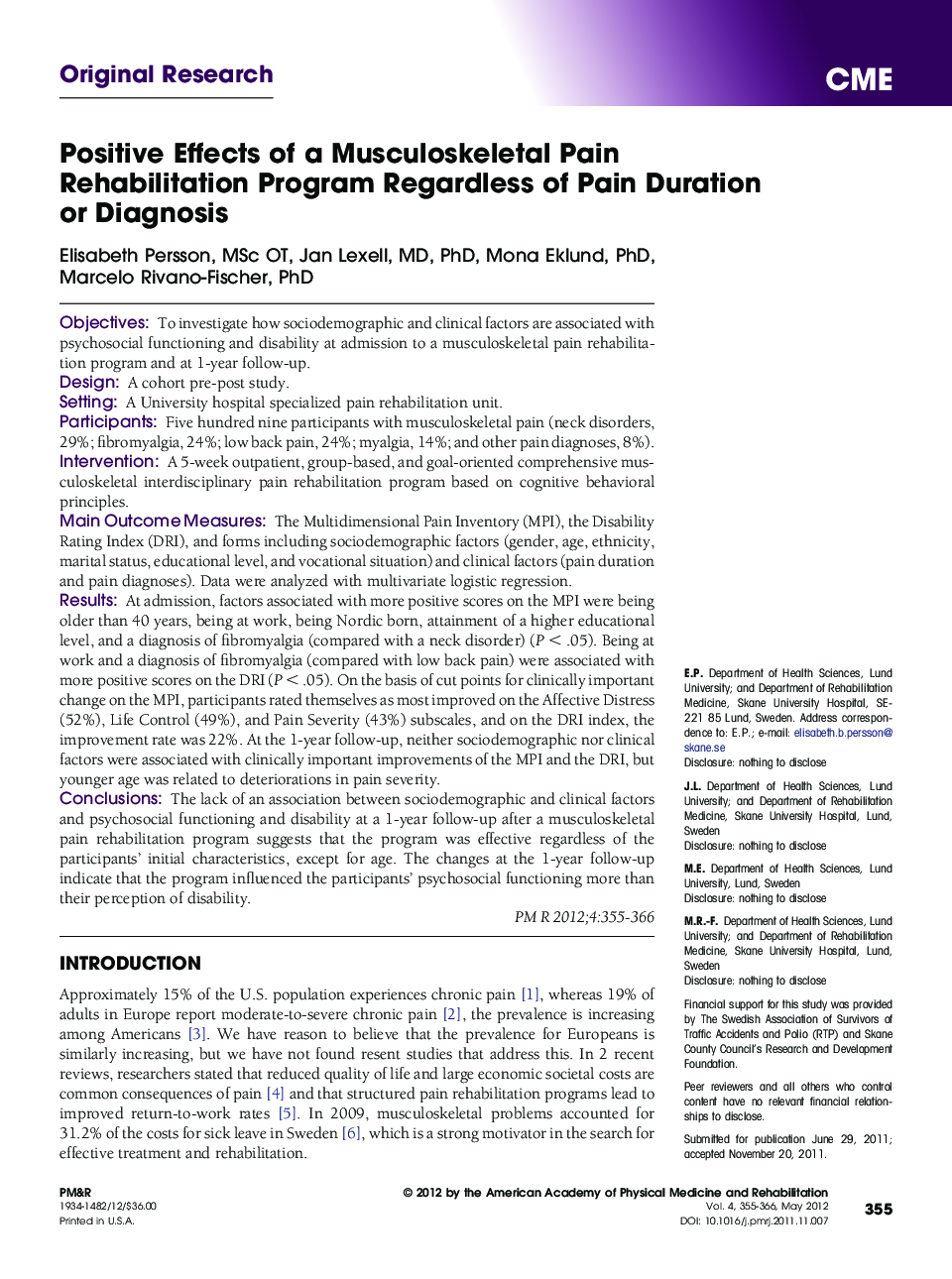| Article ID | Journal | Published Year | Pages | File Type |
|---|---|---|---|---|
| 2712589 | PM&R | 2012 | 12 Pages |
ObjectivesTo investigate how sociodemographic and clinical factors are associated with psychosocial functioning and disability at admission to a musculoskeletal pain rehabilitation program and at 1-year follow-up.DesignA cohort pre-post study.SettingA University hospital specialized pain rehabilitation unit.ParticipantsFive hundred nine participants with musculoskeletal pain (neck disorders, 29%; fibromyalgia, 24%; low back pain, 24%; myalgia, 14%; and other pain diagnoses, 8%).InterventionA 5-week outpatient, group-based, and goal-oriented comprehensive musculoskeletal interdisciplinary pain rehabilitation program based on cognitive behavioral principles.Main Outcome MeasuresThe Multidimensional Pain Inventory (MPI), the Disability Rating Index (DRI), and forms including sociodemographic factors (gender, age, ethnicity, marital status, educational level, and vocational situation) and clinical factors (pain duration and pain diagnoses). Data were analyzed with multivariate logistic regression.ResultsAt admission, factors associated with more positive scores on the MPI were being older than 40 years, being at work, being Nordic born, attainment of a higher educational level, and a diagnosis of fibromyalgia (compared with a neck disorder) (P < .05). Being at work and a diagnosis of fibromyalgia (compared with low back pain) were associated with more positive scores on the DRI (P < .05). On the basis of cut points for clinically important change on the MPI, participants rated themselves as most improved on the Affective Distress (52%), Life Control (49%), and Pain Severity (43%) subscales, and on the DRI index, the improvement rate was 22%. At the 1-year follow-up, neither sociodemographic nor clinical factors were associated with clinically important improvements of the MPI and the DRI, but younger age was related to deteriorations in pain severity.ConclusionsThe lack of an association between sociodemographic and clinical factors and psychosocial functioning and disability at a 1-year follow-up after a musculoskeletal pain rehabilitation program suggests that the program was effective regardless of the participants' initial characteristics, except for age. The changes at the 1-year follow-up indicate that the program influenced the participants' psychosocial functioning more than their perception of disability.
